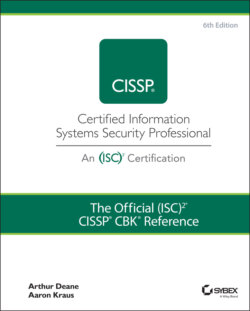Читать книгу The Official (ISC)2 CISSP CBK Reference - Leslie Fife, Aaron Kraus - Страница 14
Asset Security
ОглавлениеAssets are anything that an organization uses to generate value, including ideas, processes, information, and computing hardware. Classifying and categorizing assets allows organizations to prioritize limited security resources to achieve a proper balance of costs and benefits, and this domain introduces important concepts of asset valuation, classification and categorization, and asset handling to apply appropriate protection based on an asset's value. The value of an asset dictates the level of protection it requires, which is often expressed as a security baseline or compliance obligation that the asset owner must meet.
CISSP credential holders will spend a large amount of their time focused on data and information security concerns. The data lifecycle is introduced in this domain to provide distinct phases for determining data security requirements. Protection begins by defining roles and processes for handling data, and once the data is created, these processes must be followed. This includes managing data throughout creation, use, archival, and eventual destruction when no longer needed, and it focuses on data in three main states: in use, in transit, and at rest.
Handling sensitive data for many organizations will involve legal or regulatory obligations to protect specific data types, such as personally identifiable information (PII) or transactional data related to payment cards. Payment card data is regulated by the Payment Card Industry (PCI) Council, and PII often requires protections to comply with regional or local laws like the European Union General Data Protection Regulation (EU GDPR). Both compliance frameworks dictate specific protection obligations an organization must meet when collecting, handling, and using the regulated data.
